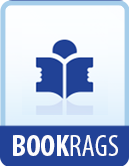There is one unhappy little boy in this class. He has broken the law in some way, and he has no work.
“That is a strange idea,” said the woman visitor. “In my time work was given to us as a punishment, and it seemed a most excellent plan.”
“We look at it in another way,” said the kindergartner, smiling. “You see, work is really the great panacea, the best thing in the world. We are always trying to train the children to a love of industry and helpful occupation; so we give work as a reward, and take it away as a punishment.”
We pass into the sunny upper hall, and find some children surrounding a large sand-table. The exercise is just finished, and we gaze upon a miniature representation of the Cliff House embankment and curving road, a section of beach with people standing (wooden ladies and gentlemen from a Noah’s Ark), a section of ocean, and a perfect Seal Rock made of clay.
“Run down-stairs, Timmy, please, and ask Miss Ellen if the seals are ready.” ... Timmy flies....
Presently the babies troop up, each carrying a precious seal extended on two tiny hands or reposing in apron. They are all bursting with importance.... Of course, the small Jonah of the flock tumbles up the stairs, bumps his nose, and breaks his treasure.... There is an agonized wail.... “I bust my seal!"... Some one springs to the rescue.... The seal is patched, tears are dried, and harmony is restored.... The animals are piled on the rocks in realistic confusion, and another class comes out with twenty-five paper fishes to be arranged in the waves of sand.
Later on, the sound of a piano invites us to witness the kindergarten play-time.
Through kindergarten play the child comes to know the external world, the physical qualities of the objects which surround him, their motions, actions, and reactions upon each other, and the relations of these phenomena to himself; a knowledge which forms the basis of that which will be his permanent stock in life. The child’s fancy is healthily fed by images from outer life, and his curiosity by new glimpses of knowledge from the world around him.
There are plays and plays! The ordinary unguided games of childhood are not to be confounded for an instant with the genuine kindergarten plays, which have a far deeper significance than is apparent to the superficial observer. “Take the simplest circle game; it illustrates the whole duty of a good citizen in a republic. Anybody can spoil it, yet nobody can play it alone; anybody can hinder its success, yet no one can get credit for making it succeed.”
The play is over; the children march back to their seats, and settle themselves to another period of work, which will last until noon. We watch the bright faces, cheerful, friendly chatter, the busy figures hovering over pleasant tasks, and feel that it has been good to pass a morning in this republic of childhood.




